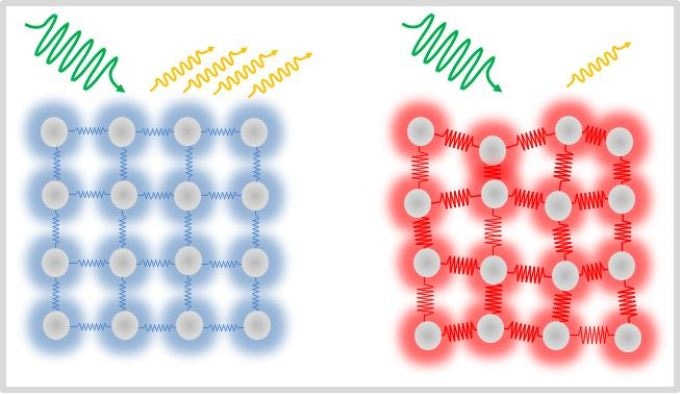Jul 1 2019
At what speeds can a magnet change its orientation and what are the microscopic mechanisms that govern it? These questions are of primary significance for the advancement of data storage and computer chips.
 When illuminated by the synchrotron light, nickel emits x-rays itself due to the decay of valence electrons. The number of emitted photons reduces when increasing the temperature from room temperature (left) to 900 °C (right). (Image credit: HZB)
When illuminated by the synchrotron light, nickel emits x-rays itself due to the decay of valence electrons. The number of emitted photons reduces when increasing the temperature from room temperature (left) to 900 °C (right). (Image credit: HZB)
For the first time, a group of researchers from HZB at BESSY II has now been successful in experimentally evaluating the primary microscopic process of ultrafast magnetism. It is possible to use the technique devised for this purpose to analyze interactions between lattice oscillations and spins in superconductors, graphene, or other (quantum) materials.
It is considered that interactions between electrons and phonons are the microscopic driving force that causes ultrafast magnetization or demagnetization processes (spin-flips). Yet, to date, it was not feasible to detect such ultrafast processes in detail because of the lack of appropriate techniques.
Original New Method at BESSY II
Currently, a research team led by Prof. Alexander Föhlisch has devised an original method to experimentally determine, for the first time, the electron-phonon driven spin-flip scattering rate in two model systems: nonmagnetic copper and ferromagnetic nickel.
X-ray emission spectroscopy (XES) at BESSY II was used to perform this. Core electrons in the samples (Cu or Ni) were excited by X-rays to develop what are called the core-holes. The core-holes were subsequently filled by the decay of valence electrons.
This decay leads to the emission of light, which can be subsequently detected and investigated. In order to detect the impacts of an increase in the lattice vibrations (phonons) from room temperature to 900 °C, the samples were measured at different temperatures.
In Nickel: Emissions Decrease When the Sample is Hot
With the increase in temperature, ferromagnetic nickel exhibited a strong decrease in emissions. This detection is in good agreement with the theoretical simulation of processes in nickel’s electronic band structure following excitations: with the increase in temperature and, thus, the phonon population, there is an increase in the scattering rate between phonons and electrons.
Since scattered electrons are no longer available for decay, light emission wanes. Predictably, with regards to diamagnetic copper, the lattice vibrations did not have much impact on the measured emissions.
We believe that our article is of high interest not only to specialists in the fields of magnetism, electronic properties of solids and X-ray emission spectroscopy, but also to a broader readership curious about the latest developments in this dynamic field of research.
Dr Régis Decker, Author and Postdoctoral Scientist, Föhlisch team
The technique could also be applied for analyzing ultrafast spin-flip processes in innovative quantum materials like superconductors, graphene, or topological insulators.